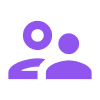Onboarding programs are the backbone of a successful onboarding experience for new employees. They not only provide much-needed knowledge and skills, but also create a positive environment in which newcomers can adapt and thrive. In this blog, we dive deeper into the importance and benefits of onboarding programs for both employees and employers and look at what onboarding programs look like in practice.
Why familiarization is important
Induction, also known as onboarding, is the process of introducing and preparing new employees for their new role within an organization. It aims to familiarize them with the company culture, expectations, procedures, and the specific tasks associated with their position. However, familiarization goes beyond simply transferring knowledge and information. It also includes creating a positive and supportive environment in which new employees feel welcome and can adapt quickly. An effective onboarding program is vital to foster the integration of new team members and ensure their long-term success.
The benefits of an onboarding program
A well-designed onboarding program offers numerous benefits to both employees and employers. Let’s take a closer look at some of these benefits.
For employees:
- Rapid Integration: An onboarding program helps new employees quickly adjust to their new roles, helping them feel more confident and perform better.
- Clarity: The onboarding program provides clarity about the new employee’s expectations and responsibilities, making it easier for them to navigate their new position.
- Professional Development: Training and mentoring in the onboarding program contribute to employees’ professional development, which can enhance their career opportunities.
For employers:
- Improved Productivity: A well-rounded employee can be productive faster, which improves overall business performance.
- Lower Turnover Rates: An effective onboarding program increases employee engagement and therefore reduces staff turnover.
- Better Teamwork: New employees who are properly inducted can work more efficiently with their colleagues and contribute to positive team dynamics.
The familiarization program in practice
For the first day of work
Before the first day of work, the familiarization process begins. During this phase, it is important to make the right preparations to give the new employee a smooth start. This includes gathering and organizing the necessary materials and assigning a mentor or buddy for the first few days.
- Preparation and Materials: This phase lays the foundation for successful onboarding. All necessary materials, such as manuals, documents and access to relevant systems, must be arranged in advance.
- Assignment of Mentor or Buddy: Appointing an experienced colleague as a mentor or buddy for the new employee is invaluable. This person can provide the newcomer with practical information and guidance during the first few days.
First Week
A new employee’s first week is crucial. It is the period when they explore their new environment, get to know colleagues and begin to understand the company culture. Here are some important steps to take during this week:
- Company Presentation: The new employee is given an overview of the organization, including its history, mission, vision and core values. This helps them familiarize themselves with the corporate culture.
- Job-specific training: Specific training and instruction on their duties and responsibilities are provided. This helps them quickly understand what is expected of them.
- Technology and systems: Training on the use of tools, software and systems needed for their jobs is essential to get them operational quickly.
First Months
In the first few months, the familiarization process will be deepened. New employees begin to integrate into their roles and work to build relationships within the team. Here are some of the activities taking place in this phase
- Culture and norms: New employees gain a better understanding of company culture, values and behavioral norms, which is essential for effective collaboration.
- Legal and compliance information: Explaining relevant laws, regulations and company policies helps them act in compliance with regulations.
- Mentoring and Support: Throughout the first month, the mentor or buddy remains available to provide guidance and answer questions.
Dividing the onboarding process into these three phases helps organizations onboard new employees in a structured and targeted way, where they gain all the necessary knowledge and skills and quickly adapt to the organization.
The importance of support after the familiarization program
The onboarding program is just the beginning of the journey for new employees. It is vital that organizations continue to invest in the professional development and engagement of their employees even after the onboarding program is complete. This can include regular check-ins, training for continued growth and opportunities for career development.
How to use Learned to transform your onboarding program into a streamlined and effective onboarding experience
With Learned, you can easily create a structured and effective onboarding program using our Onboarding module. This makes onboarding new employees effortless and streamlined. Learn how Learned can help you design a seamless onboarding program and get new team members up and running quickly!




























